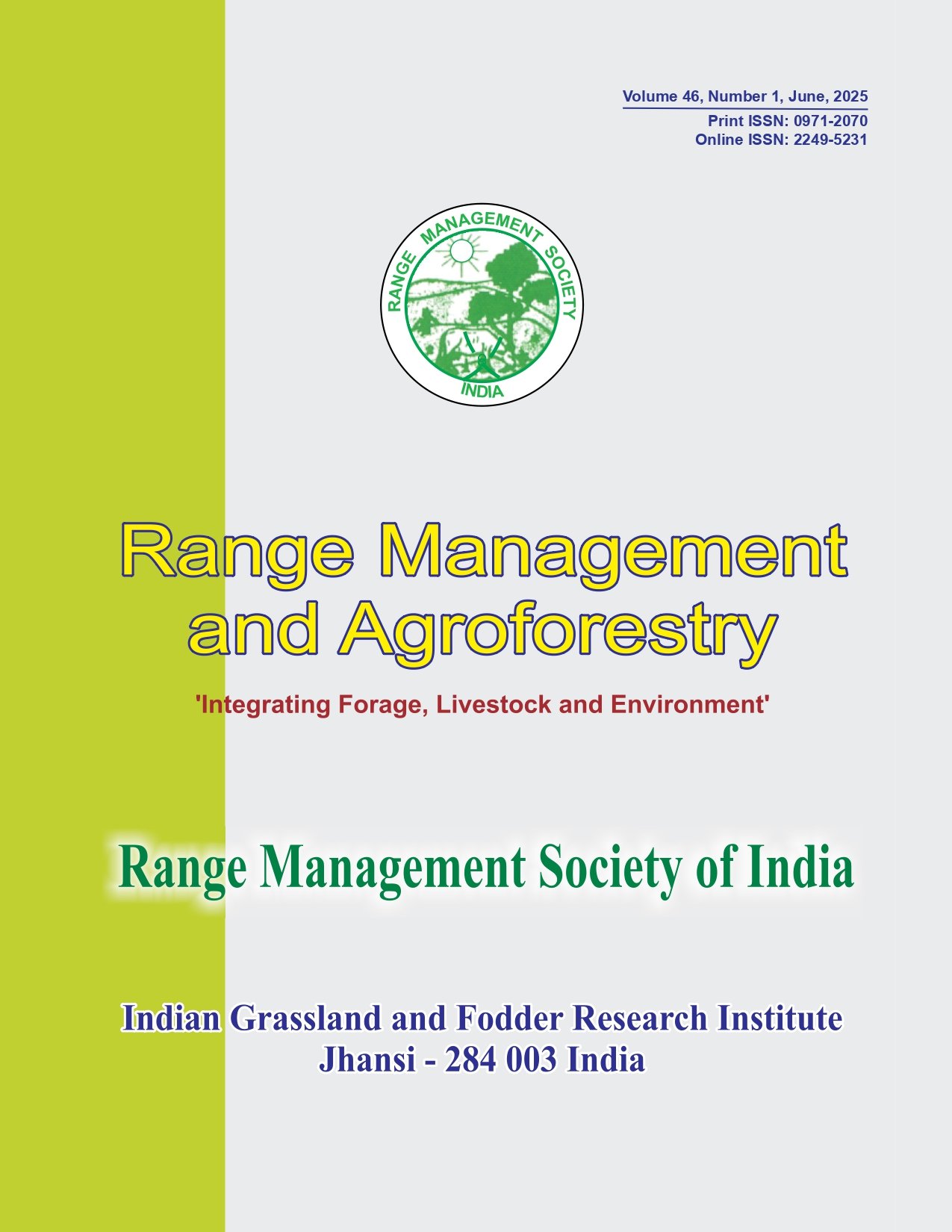Effect of mineral supplementation on rumen fermentation, microbial population, nutrient intake and utilization in sheep fed sorghum stover based diets
Keywords:
ASMM, Nutrient utilization, Rumen enzymes, Rumen metabolites, Rumen microbes, SheepAbstract
Study was conducted to record the effect of area specific mineral mixture (ASMM) supplementation on rumen fermentation, microbial population, nutrient intake and utilization in sheep fed sorghum stover based diets. A concentrate mixture was prepared with barley, mustard cake and wheat bran, which was then fortified with 0% (T1 ), 1% (T2 ), 2% (T3 ) of ASMM and 2% (T4 ) of standard mineral mixture available in the market. Female Jalauni sheep (16) were selected and distributed randomly into 4 dietary treatment groups of 4 animals in each group. The animals were offered required amount of sorghum stover and concentrate mixture fortified with different levels of mineral mixture for a maintenance dietary regime. Study showed that pH of strained rumen liquior was highest in non-supplemented diet of T1 group (6.54) and lowest in T3 group (6.29) and the differences were significant among the groups. On the contrary, higher TVFA concentration (meq/dl) was recorded in T3 (13.53) when compared to other groups like T1 (10.98). The carboxymethyl cellulose and xylanase activities (g sugar/h/day) also followed the same trend, being highest in T3 and lower in T1 group. Population of total viable bacteria (x109 /ml) was highest (P<0.01) in T3 (15.63) and lowest in T1 group (8.27). Similar was the trend with respect of amylolytic and cellulolytic bacterial population. But dietary treatments had no influence on proteolytic bacterial population. Fungal population was significantly higher in T3 group (5.68) as compared to T2 (3.97) and T1 (2.63) groups. Digestible crude protein intake (DCPI) was higher (P<0.05) in mineral supplemented groups, being maximum in T3 group (36.8 g/d). Average daily total digestible nutrient intake (TDNI; g) was maximum (P<0.05) in sheep of T3 group (424) followed by T2 (352), T4 (329) and T1 (302) groups. Thus ASMM supplementation had positive effect on rumen fermentation, microbial population and nutrient utilization in sheep fed sorghum stover based diets.




